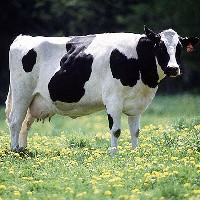A soil scientist and engineer team at the USDA’s Agricultural Research Service (ARS) has found a way for dairy farmers to reduce ammonia emissions from their production facilities: injecting liquid manure into crop fields below the soil surface.
A study conducted by soil scientist April Leytem and agricultural engineer David Bjorneberg at the ARS Northwest Irrigation and Soils Research Laboratory in Kimberly, Idaho could help Idaho dairy farmers increase nitrogen capture in the soil and protect air quality from agricultural ammonia emissions.
Leytem and Bjorneberg conducted their study on four dairy farms in Idaho, where the number of milk cows statewide has increased 88 percent in the last decade. They applied liquid dairy manure stored in containment lagoons either by surface application, using a rolling tine aerator to incorporate manure into the top four inches of the soil surface, or injecting the manure 12 inches below the soil surface.
Over three days, the greatest concentration of emissions was recorded during the 48 hours immediately following the manure applications, with the majority of emissions occurring within 24 hours. Fields where manure had been applied with subsurface injection had average ammonia concentrations of 0.06 milligrams of nitrogen per cubic meter, 65 percent lower than emission rates resulting from soil where the manure was applied with the rolling tyne aerator or on the surface.
Leytem and Bjorneberg concluded that dairy farmers could best reduce ammonia emissions by using subsurface injection of dairy manure, and that immediate injections into the soils can limit losses of the manure’s beneficial nitrogen. The results were published in the journal The Professional Animal Scientist.


 RSS - Posts
RSS - Posts
You must be logged in to post a comment.